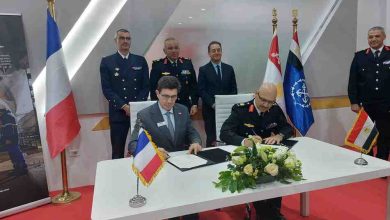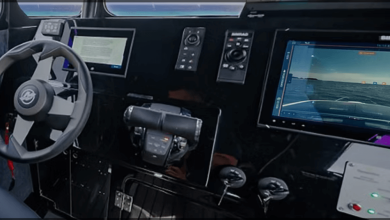
“Navigating Tomorrow: Lockheed Martin’s Revolutionary AI for Maritime Monitoring”
Lockheed Martin has achieved a remarkable breakthrough in artificial intelligence and aerial reconnaissance, demonstrating the capability to detect and track maritime targets with unparalleled accuracy. In a recent flight assessment on the U.S. West Coast, engineering teams from Lockheed Martin effectively showcased technology that can autonomously identify targets using AI-enhanced Synthetic Aperture Radar (SAR) with integrated sensor management intelligence.
SAR serves as the gold standard for imaging maritime targets, including naval ships, yet it has historically relied on manual image evaluation. AI harnesses the full potential of SAR for enhanced object detection with faster, more accurate, and automated image analysis. By deploying AI-focused SAR target identification, military officials can swiftly differentiate between combatant and non-combatant vessels without the need for manual inspection.
“This signifies a major leap in utilizing AI to enhance situational awareness and decision-making capabilities, offering unmatched threat identification over extensive distances and under various weather conditions,” expressed John Clark, senior vice president of technology and strategic innovation at Lockheed Martin. “We are committed to advancing this ability, integrating data from diverse sensors to produce more accurate insights and support warfighters in making informed decisions in the maritime conflict landscape.”
This groundbreaking achievement, developed by the Lockheed Martin AI Center (LAIC), Skunk Works®, and Rotary Mission Systems (RMS) team, represents a significant enhancement in situational awareness for maritime target recognition.
During the demonstration, the SAR Automatic Target Recognition (ATR) capability, bolstered by Machine Learning Operations (MLOps) tools for rapid retraining, successfully categorized targets of interest in near real-time. SAR ATR was coupled with autonomous sensor control, dynamically adjusting the radar based on target identification in real-time. This functionality was realized on low Size, Weight, and Power (SWaP) hardware deployed in the field, featuring rapid edge processing without dependence on extensive cloud computing or terrestrial facilities.
Testing of AI-driven SAR ATR will continue throughout the year. Data collected from these flight assessments will be utilized to advance and refine multiple Lockheed Martin autonomous systems, encompassing cooperative combat aircraft and integrated systems applications.
For more information about Lockheed Martin’s AI and Machine Learning capabilities, visit: Lockheed Martin AI and Machine Learning







